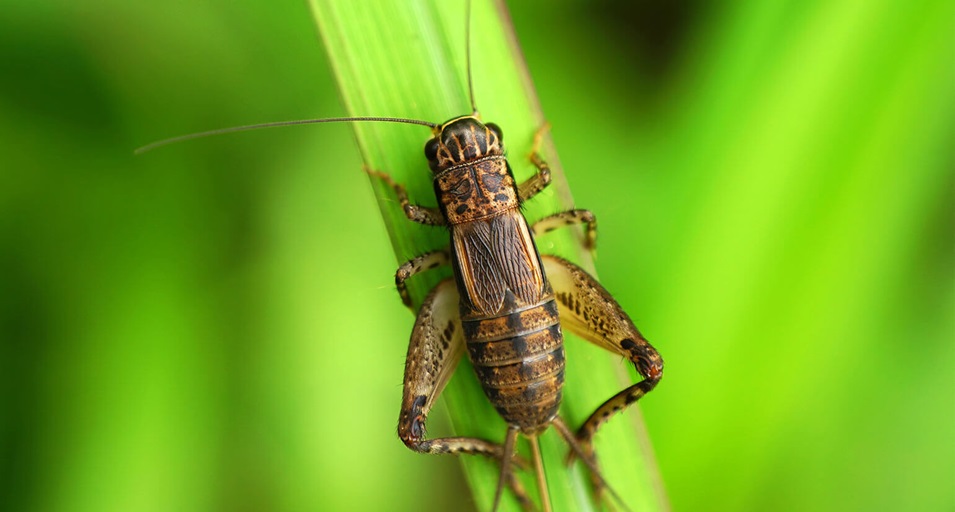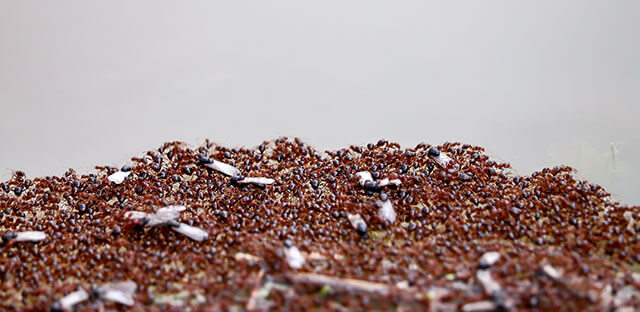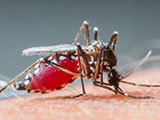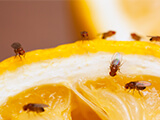
HOW WEATHER AFFECTS INSECTS
Find out how outdoor temperatures and rain levels affect insects, including their behavior, reproduction rates, feeding habits, and more. Plus, learn what weather conditions drive bugs inside for shelter.

HOW DOES THE TEMPERATURE AFFECT INSECTS?
Insects are cold-blooded creatures that can’t produce their own body heat. This means the temperature of their surroundings plays an important role in their growth, development, and behavior.1 Find out how temperature affects insects and why temperature fluctuations can lead to indoor bug infestations.
COLD WEATHER
-
Insects adapt to cooler temperatures by migrating to warmer weather, finding a place to hibernate, or seeking shelter, which can range from burying themselves underground to invading our homes in search of warmth.2
-
Spiders, lady bugs,boxelder bugs, andAmerican cockroaches are just a few common bugs that make their way indoors as temperatures begin to drop.3,4
-
When the weather turns cool, many insects become sluggish. After a cold night, grasshoppers are often too stiff to hop until the sun warms them up again. And some flying insects are unable to move their wings fast enough to fly when the temperature drops.5
HOT WEATHER
-
With the exception of the tropics, insect reproductive rates typically increase in warmer months, which is why you see more bugs when the temperature rises.6
-
As temperatures increase, so do the metabolic rates of insects, which means they need to eat more to survive.6 Thus, bugs can invade homes looking for a tasty snack or you may notice increased insect damage to your garden during warmer months.
USING CRICKETS’ CHIRPS TO MEASURE THE TEMPERATURE7,8
Cricketschirp more frequently in warm weather. This is because certain chemical reactions that allow crickets to chirp occur more rapidly as the temperature rises. There’s even a formula, known as “Dolbear’s Law,” that can help measure the approximate temperature outside based on the frequency of chirps. To convert cricket chirps to degrees Fahrenheit, just count the number of chirps in 14 seconds and add 40. For example: 32 chirps + 40 = 72° F. To convert to degrees Celsius, count the number of cricket chirps in 25 seconds, divide by 3, and add 4. For example: 57 chirps / (divided by) 3 + 4 = 23° C.
HOW DO HEAVY RAINS AND DROUGHTS IMPACT BUGS?
Just like humans, insects need water to survive. However, the effects of too much or too little rain on insects depend on the type of bug.
DRY WEATHER
-
Extremely dry weather sends many bugs indoors in search of water, includingantsand camel crickets.9,10
-
Some insects thrive and multiply in dry, hot weather. For example, grasshopper and spider mite populations skyrocket under these conditions and can destroy farm crops during droughts.11,12
-
Mosquitoes need water to lay their eggs and breed, so dry weather will affect their reproduction, even if the temperatures are within the range where they are active.
WET WEATHER
-
Increased precipitation boosts activity from moisture-loving bugs likemosquitoes,cockroaches,stink bugs, andtermites.9
-
Mosquitoes lay their eggs in stagnant water. So after heavy rainfall, mosquito populations can increase.
-
During excessive rain, many insects invade homes looking for shelter, includingspiders,ants, androaches.
-
Flood conditions can force some bugs, includingantsandyellow jackets, out of their nests in the ground. When this happens, ant colonies can quickly invade homes looking for food and dry ground.13,14
FIRE ANT RAFTS

Flooding often forcesfire antsout of their nests. But these resourceful critters band together to form a raft with their bodies, placing the queen and her babies on top and floating around until they can find a dry place to land and build a new nest.15
FIND SOLUTIONS FOR BUGS
Explore our family of products designed to help you get tough in the fight against insects, no matter the weather, and keep them from invading your home.
SOURCES
-
2. https://www.smithsonianmag.com/science-nature/what-do-insects-do-winter-180962183/
-
3. https://www.pestworld.org/news-hub/pest-articles/ladybugs-swarm-homes-as-cool-weather-arrives/
-
4. https://www.pestworld.org/news-hub/pest-articles/what-happens-to-pests-during-the-winter/
-
6. https://www.washington.edu/news/2018/08/30/climate-change-insects-crops/
-
7. https://www.almanac.com/content/predict-temperature-cricket-chirps
-
8. https://www.scientificamerican.com/article/bring-science-home-cricket-temperature/
-
10. https://www.pestworld.org/news-hub/pest-articles/camel-crickets-101/
-
11. https://www.scientificamerican.com/article/drought-could-aid-crop-destroying-pests/?redirect=1


